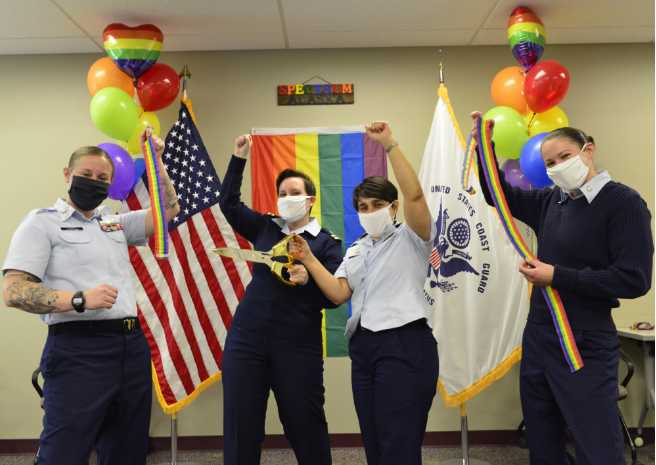 Arctic Care 2017 Set for Kodiak Communities in March/April
Arctic Care 2017 Set for Kodiak Communities in March/April
A few weeks ago, Arctic Care team members returned to Kodiak to coordinate last remaining logistical details of the upcoming March/April 2017 mission to provide rural health care services in our area.
As in years past, the Arctic Care team has partnered with KANA, U.S. Public Health Service, United States Coast Guard, and Air station Kodiak to bring an array of services to the Kodiak community including medical, dental, optometry and veterinary care. Partners met at KANA to finalize the last remaining logistics and have responded with innovative tactics for this year’s effort.
Multiple full days of health care services will be made available to Kodiak Island communities, both in town and in each village, as needed based on population sizes throughout the March/April 2017 operation. Arctic Care services are open to everyone in the Kodiak community at no cost.
KANA will again retrofit the downtown AC building as a temporary clinic housing medical, optometry, dental, and veterinarian services to the Kodiak community. Specialty services not regularly available in our community, including endodontic care, will be offered at the Mill Bay Health Center. Once scheduling details have been confirmed, appointment availability and instructions will be made available to the public.
Arctic Care is an extension of the Department of Defense’s Innovation Readiness Training program. “The Innovative Readiness Training is intended to activate reservists to come into an underserved area and prepare for wartime missions,” said Tammy Hansen, Vice President of Health Services. Arctic Care provides joint service experience to active and reserve components of the Air Force, Army, Navy, and Marine Corps. Arctic Care Providers are all licensed, highly trained experts in their practice and will be fully credentialed to meet KANA’s standards to provide the highest quality of healthcare available.
Hansen said, “KANA serves as the conduit within the communities to ensure that the IRT has facilities, additional supplies, and transportation. This is our fifth mission and we would expect to continue doing this as long as we’re able to.”
New Patient Housing Opens at ANMC
ANMC’s Quyana House has provided 54 semi-private rooms adjacent to our hospital for many years. ANTHC also contracts with local hotels to ensure that there is enough housing for everyone who needs it. But that is not enough. In response to this need, ANTHC has made patient housing a top priority and has welcomed patients from around the state into new ANMC Patient Housing.[xyz-ihs snippet=”Adsense-responsive”]The last walls have been built and the final touches are being prepared for the six-story, 202-room patient housing facility. The facility has been fully provisioned, from bedding and linens to coffee cups, rocking chairs for family rooms and appliances for communal kitchens and “wiggle walls” – 90-inch interactive video screens that can recognize the movements of children, installed in play areas on the first and sixth floors.
“We are especially excited for the amenities designed for families and kids, since these are not typically found in the lodging where our people would stay before,” said Phil Degnan, ANTHC’s Housing General Manager. “These family-friendly spaces will provide moments of fun during their health treatment.”
The patient housing facility will be a home away from home for patients traveling to receive care at the Alaska Native Medical Center. Ensuring convenient and available lodging reduces the travel barriers to care and health care system costs, and increases access to the quality care that will advance ANTHC’s vision that Alaska Native people are the healthiest people in the world.
For more information about the project, visit https://anmc.org/new-anmc-patient-housing/.
DNA Screening Test for Alaskan Newborns Identifies CPT1A Arctic Variant
Every baby born in Alaska undergoes a series of tests just before they leave the hospital to go home. A small blood sample is collected from the baby’s heel and sent to a laboratory for testing that targets about 50 conditions. These routine tests are done to identify any possible disorders in the baby’s body chemistry.
In July, the State of Alaska launched a new DNA test to better identify babies born with a gene variant known as CPT1A Arctic variant. This genetic variant is almost exclusively found among Arctic indigenous populations, specifically Iñupiat and Yup’ik in Alaska, and leads to a genetic condition that slows the body’s ability to burn fat for energy.
CPT1A Arctic variant can easily be managed, but the condition can lead to serious health problems when a person does not or cannot eat, especially when very young, which is why this new test is so important to identify the genetic variant as early as possible. The gene poses a risk for people who fast for prolonged periods because their bodies cannot produce needed glucose from fat. Consequences can be grave for infants who go without food longer than overnight, and for other young children who rely on others to give them food.
According to results from the Alaska Department of Health and Social Services, this new test has found that about a quarter of Alaska Native newborns in the state hold both copies of the gene that carries the condition. Another 36 percent of Alaska Native newborns have a single copy of the gene. The CPT1A Arctic variant gene is recessive, so both copies are needed to produce the metabolic condition.
For more information on the Newborn Metabolic Screening Program visit https://dhss.alaska.gov/dph/wcfh/Pages/metabolic/services/default.aspx.
[xyz-ihs snippet=”Adsense-responsive”]







